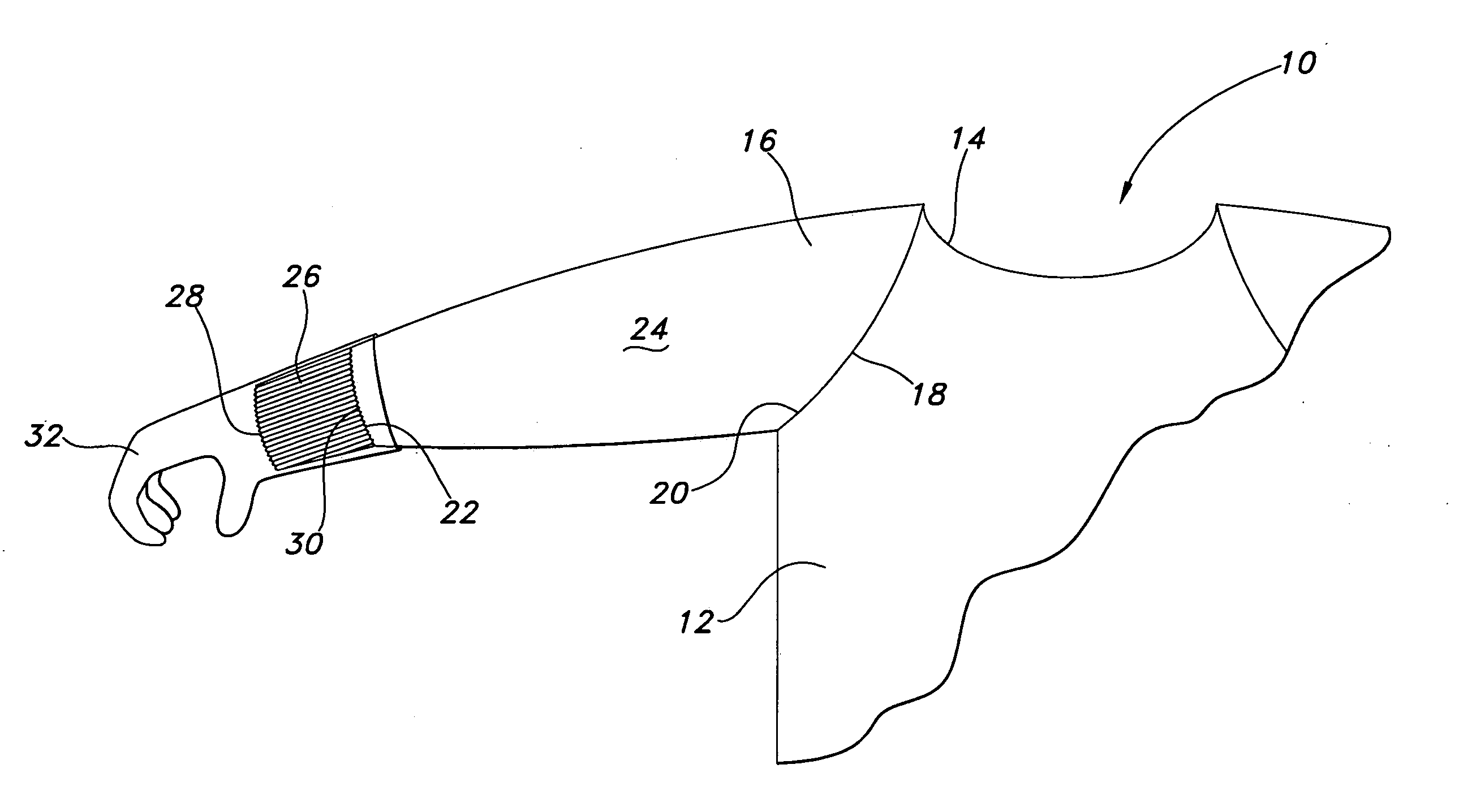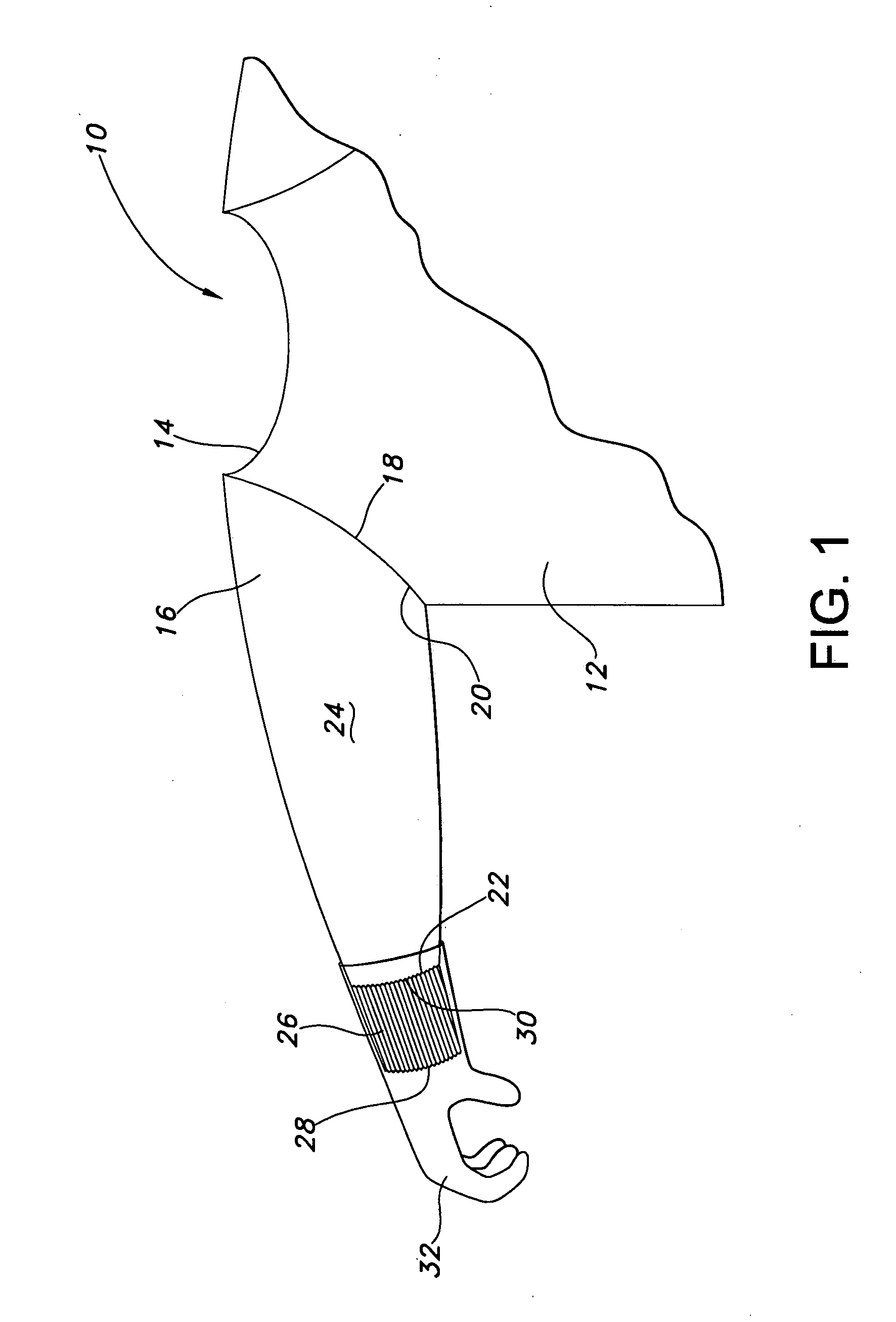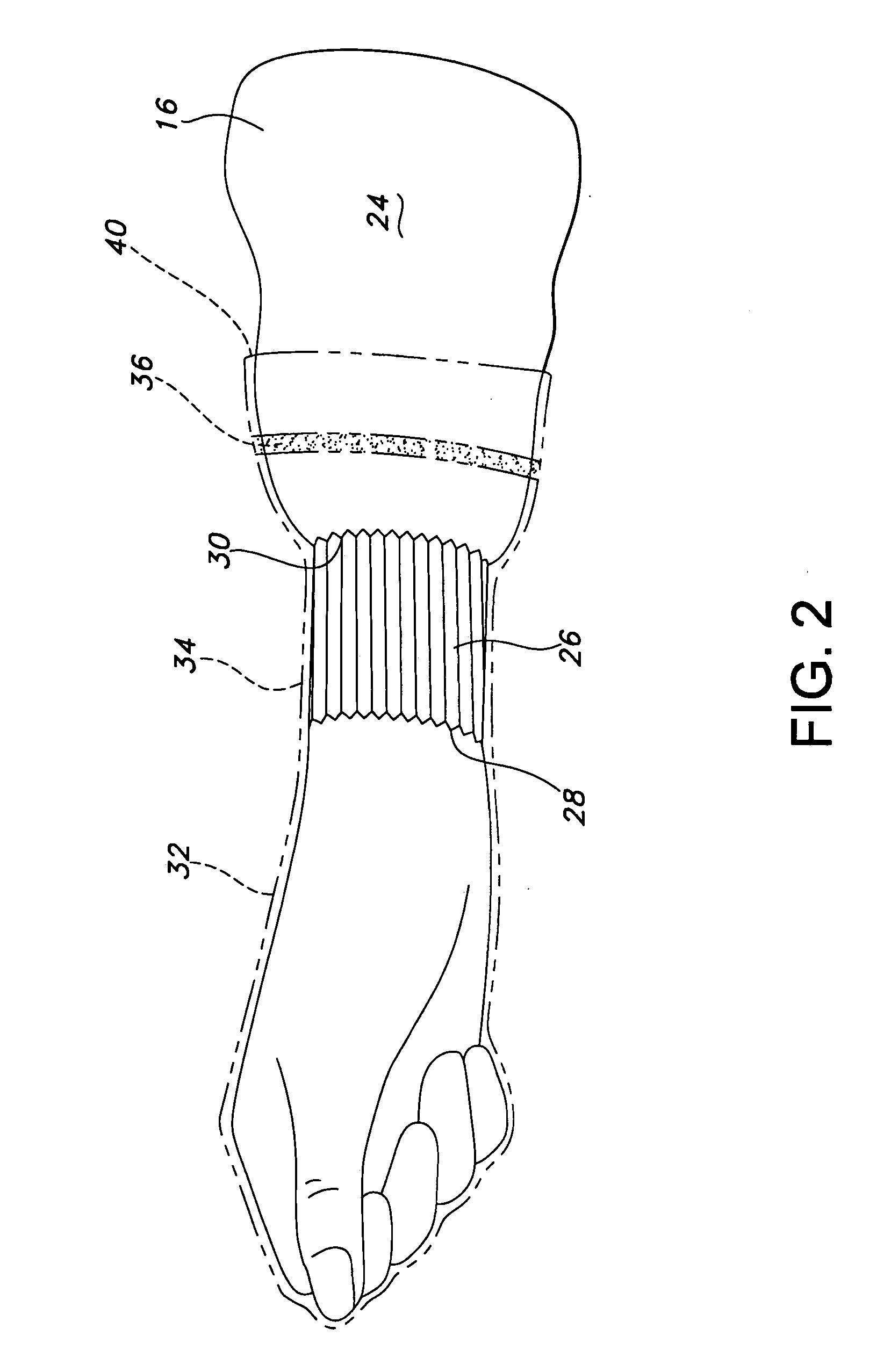Gloves attached but removable from garments
a technology of gloves and protective garments, applied in the field of protective garments, can solve the problems of glove “roll-down” or slippage, unsatisfactory opening or seams in the garment, and inability to adjust the glove, etc., and achieve the effect of sufficient adhesion and sufficient strength
- Summary
- Abstract
- Description
- Claims
- Application Information
AI Technical Summary
Benefits of technology
Problems solved by technology
Method used
Image
Examples
examples
[0031] The attachment of the glove to the gown sleeve must be reversible, in the sense that no damage is caused by removing the glove from sleeve. To determine ranges of acceptable reversible glove to gown attachment, the observed performance of removing various gloves attached to gown sleeves was correlated to quantifiable measurements for the adhesion between certain adhesive coated substrates and stainless steel and for adhesion between one of the certain adhesive coated substrates and films used to make the various gloves supported on stainless steel. In this way, adhesives that show quantified measurements of adhesion similar to those values giving too little or too much glove to attachment gown attachment can be excluded from further consideration.
[0032] Suitable procedures to measure the adhesion of the glove to gown attachment are based upon ASTM Standard 3330 / D 3330M-02. While this ASTM Standard is most commonly used for measuring the peel adhesion of pressure-sensitive ta...
PUM
| Property | Measurement | Unit |
|---|---|---|
| peel strength force | aaaaa | aaaaa |
| pressure | aaaaa | aaaaa |
| adhesion | aaaaa | aaaaa |
Abstract
Description
Claims
Application Information
 Login to View More
Login to View More - R&D
- Intellectual Property
- Life Sciences
- Materials
- Tech Scout
- Unparalleled Data Quality
- Higher Quality Content
- 60% Fewer Hallucinations
Browse by: Latest US Patents, China's latest patents, Technical Efficacy Thesaurus, Application Domain, Technology Topic, Popular Technical Reports.
© 2025 PatSnap. All rights reserved.Legal|Privacy policy|Modern Slavery Act Transparency Statement|Sitemap|About US| Contact US: help@patsnap.com



